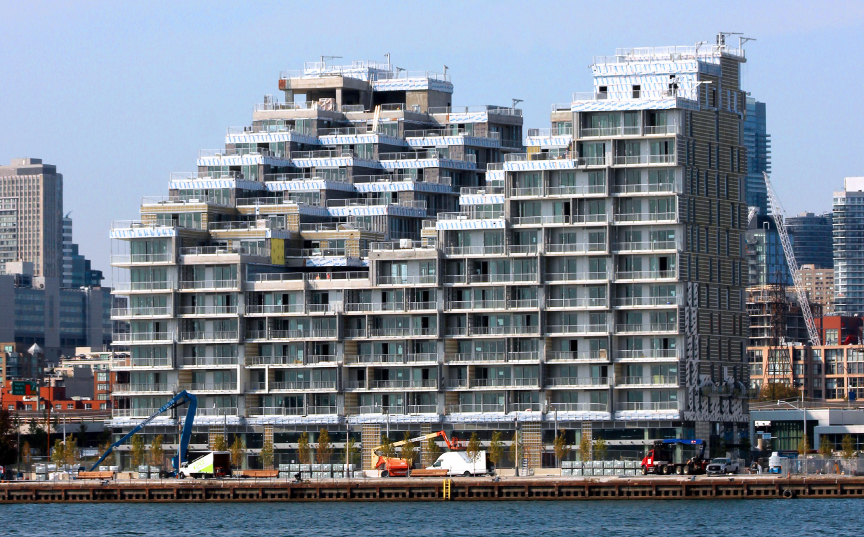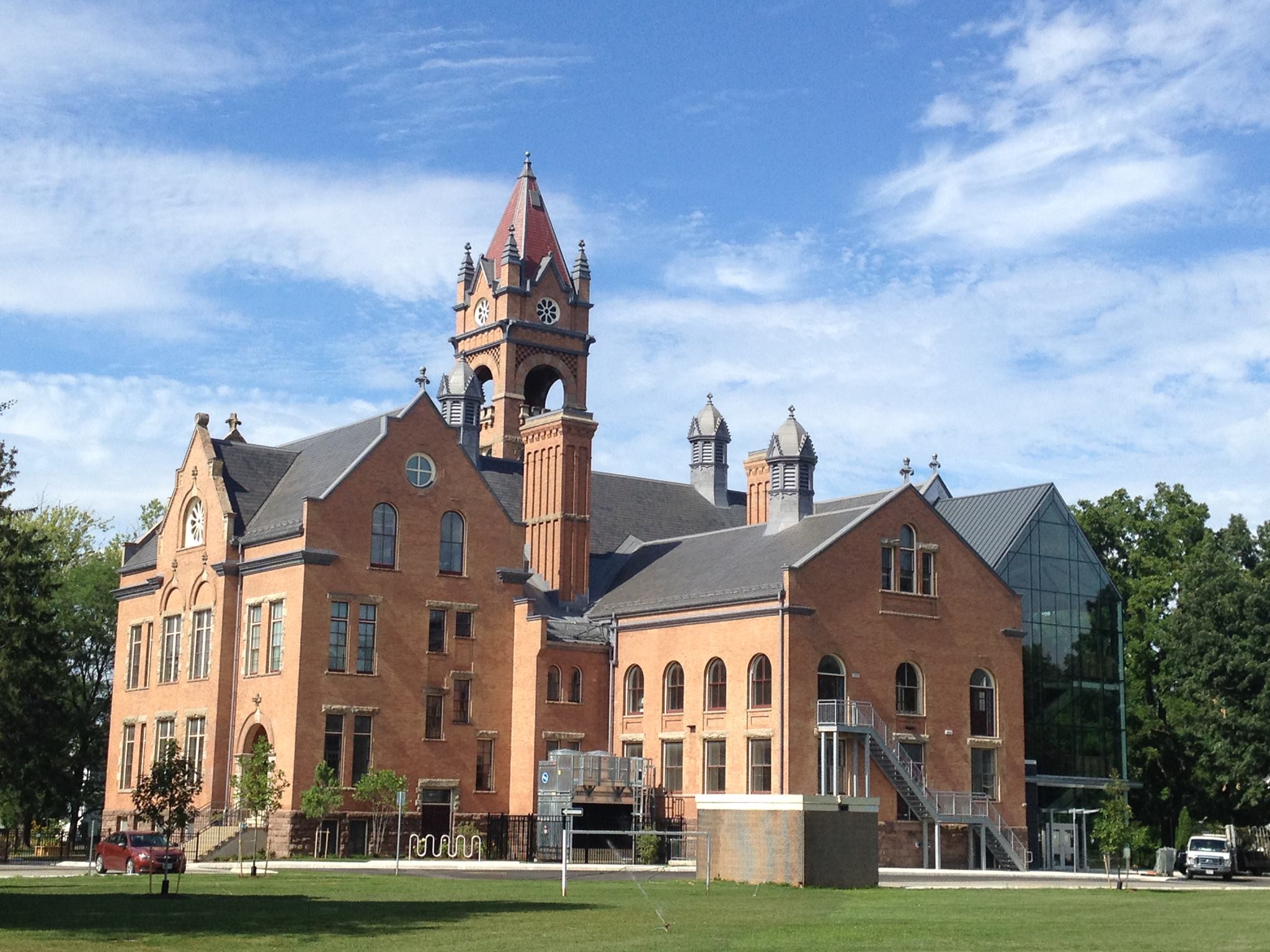
Aquabella Case Study

Designing LEED-Certified Waterfront Condos

The Challenge
Located on Toronto’s eastern waterfront, Aquabella is a luxury residential condominium that’s part of the master-planned Bayside community, a mixed-use neighbourhood designed for people to live, work, learn and play. The third building in Tridel’s phased residential development, the luxury condo features a unique architectural design with private terraces overlooking Lake Ontario and suites created with end-users in mind.
The initial conception of the project was geared towards achieving a LEED Platinum Certification. With sustainability at the heart of the design, Tridel sought locally sourced construction materials, low-flow plumbing fixtures and Energy Star appliances.
For heating and cooling, they wanted the highest-quality, most energy-efficient technology available on the market. Additionally, the developer wanted to minimize bulkheads in the suites so residents could enjoy a cleaner design and more livable space. Minimal noise and the ability for simultaneous heating and cooling year round were other key considerations. Finally, the heating and cooling had to integrate with a smart control and monitoring system and improve indoor air quality.
The Solution
Desiring a first-class product that would work with the Aquabella’s design and be exceptionally energy efficient, Tridel reviewed several companies and systems. After careful consideration, they selected a VRF (Variable Refrigerant Flow) system from Mitsubishi Electric.
“We were impressed with the quality of product and level of service,” explains Adrian Wang, Director, Innovation and Sustainability at Tridel. “But what really swung us in their direction were the glowing reports and recommendations we received from the trades.”
In a conventional point tower, there are very few offsets and changes to the shape of the building. But to maximize lake views for every unit, the Aquabella has a heavily terraced and articulated architecture, which can make incorporating heating and cooling pipes more complex. The VRF system resolved this challenge as it runs horizontally throughout the building, allowing for flexibility in the exterior design.
Another notable feature of the VRF system is its ability to provide superior HVAC zone control, enabling each unit to control its own heating and cooling. This means residents in the sun-facing southern façade can cool their units, while those in the north side of building can introduce heating – a combination that is often necessary to keep everybody comfortable during the shoulder seasons.
The system is also much more energy efficient. Instead of having HVAC units combating each other by running the boiler and chiller plants concurrently, the VRF units optimize efficiency by moving heat around a building’s footprint as required. The result is a greener building with reduced CO2 production and energy consumption. The whisper-quiet system is also quieter and has more unobtrusive bulkheads than competitors, minimizing noise and disruption for residents.
The Results
At the time of writing, the Aquabella is in the final stages of construction before occupancy begins throughout late 2020 and early 2021. The Mitsubishi Electric VRF system is a core contributor to Tridel’s pursuit of a LEED platinum certification, as it can help residents save up to 60% on energy. Wang also believes that the low noise and minimal bulkheads that come with the Mitsubishi Electric VRF system have been important selling features for condo purchasers, as they allowed Tridel to optimize the suite layouts and beautiful lake views.
Summary
Developer:
Tridel
Architectural:
3NX + Kirkor Architects Engineering
Consulting Firm:
MCW
Engineers Distributor:
Mits Airconditioning Inc.
HVAC Contractor:
Network
Mechanical Location:
Toronto, Ontario Building
Sector:
Multi-family
Size:
176
Suites Challenges:
Design a LEED Platinum building with precise individual in-suite heating and cooling units that minimize noise and bulkheads.
Selection Criteria:
• Simultaneous heating and cooling year round
• Reduced / Smaller footprint
• Energy monitoring
• Low noise
• Minimal in-suite bulkheads
• LEED Platinum Phased installation
• VRF integration to smart control monitoring system
Design/Engineering Solution:
Mitsubishi Electric Water-Source VRF heat recovery system with condenser units installed floor by floor:
• 40 X PQRY-P**TLMU-A1
• 3 X PUMY-P48NKMU2
Mitsubishi Electric Indoor unit models:
• 129 X PEFY-P**NMAU-E3
• 174 X PVFY-P**NAMU
Results:
• Beautiful modern suites with functional layout
• Highly efficient units that redistribute energy
• Comfortable indoor temperatures year round


